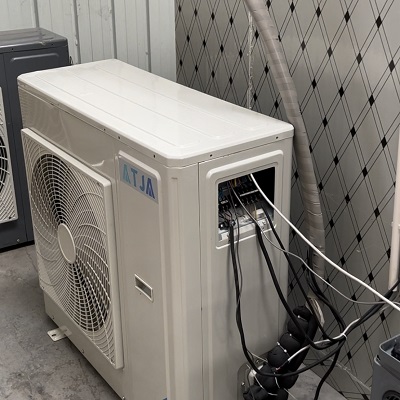I. Optimizing Equipment Operation: From "Passive Power Consumption" to "On-demand cooling"
Give priority to using frequency conversion units to precisely match the cooling capacity requirements. Frequency conversion units can adjust speed steplessly according to the temperature fluctuations in the warehouse (such as operating at a reduced frequency at low loads), and are 25% to 35% more energy-efficient than fixed-frequency units. Take a 10-cubic-meter cold storage as an example. The inverter unit consumes about 7 kilowatt-hours of electricity per day, while the fixed-frequency unit consumes approximately 10 kilowatt-hours. Calculated at 0.8 yuan per kilowatt-hour, the daily electricity bill can be saved by 2.4 yuan, and the annual savings exceed 800 yuan. If a fixed-frequency unit is already in use, a frequency conversion modification module can be installed (with a cost of approximately 2,000 to 3,000 yuan), and the investment can usually be recovered within 1 to 2 years.
Dynamically adjust the set temperature to avoid "over-cooling". For every 1℃ decrease in the temperature of the cold storage, energy consumption increases by approximately 10%. The minimum necessary temperature should be set according to the requirements of the goods
For fresh produce preservation (such as vegetables), a temperature range of 0℃ to 5℃ is sufficient; there is no need to lower it below 0℃.
The storage temperature for frozen meat should be set at -18 ℃ (in compliance with national standards), instead of -25 ℃ (increasing energy consumption by an additional 35%).
Ii. Reducing Cold Loss: Plugging the "Energy Consumption Loophole"
Upgrading insulation performance and reducing cold loss rate: The insulation layer serves as the "heat insulation barrier" of cold storage and requires focused inspection and optimization
Replace the aged insulation layer: Replace the 5cm thick polystyrene board (with a high thermal conductivity) with a 10cm thick polyurethane board (with a 50% lower thermal conductivity), and the average daily power consumption of a 10 cubic meter cold storage can be reduced by 15% to 20%.
Repairing cold leakage points: Aging of door gap sealing rubber strips and wall cracks can lead to 20% to 30% loss of cold energy. Regularly replacing the rubber strips (at a cost of about 50 to 100 yuan per time) and filling the cracks can save 10% of energy consumption.
Control the frequency and duration of opening the door to reduce heat intrusion. Each time the door is opened, approximately 20% of the cold energy is lost, and the compressor needs to run for an additional 30 minutes to replenish the cooling. Optimization plan
Install "air curtain machine + rapid rolling shutter door" to reduce the entry of hot air when opening the door.
Centralized storage and retrieval of goods: By changing the scattered "multiple small-batch" storage and retrieval to "1-2 large-batch times per day", the average daily number of door openings for a 10-cubic-meter cold storage is reduced from 10 to 2, and daily energy consumption can be cut by 20%.
Iii. Strengthen daily maintenance: Extend equipment lifespan and reduce failure losses
Regular cleaning of heat exchange components can enhance refrigeration efficiency. A 1mm accumulation of dust in the condenser and frost on the evaporator can lead to a 15% to 20% decrease in heat exchange efficiency and a 10% increase in energy consumption. Maintenance frequency
Condenser (outdoor) : Flush it with a high-pressure water gun once every two weeks (to remove dust and willow catkins).
Evaporator (indoor) : Defrost once a month (manually or with the automatic defrosting function enabled) to prevent excessive frost from hindering heat exchange. Replenish the refrigerant in a timely manner and replace the vulnerable parts


